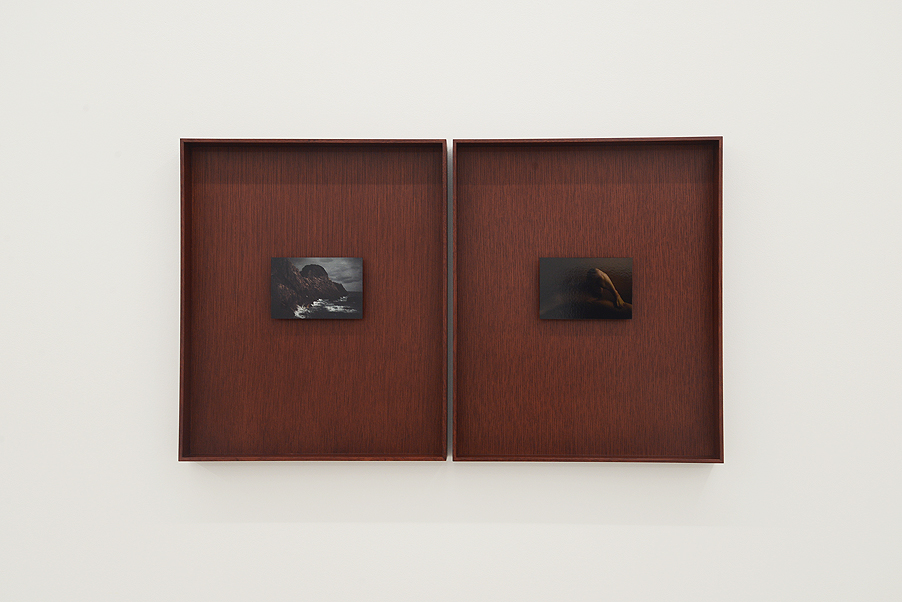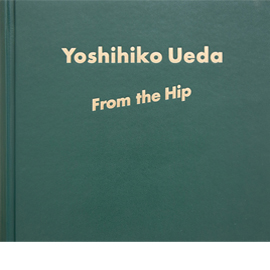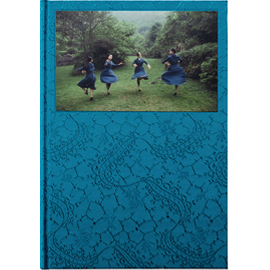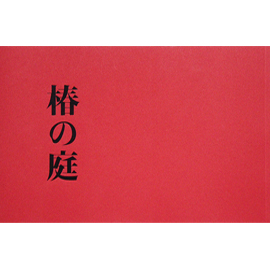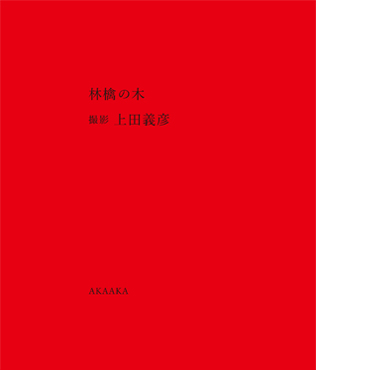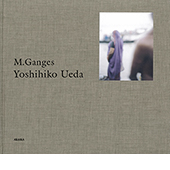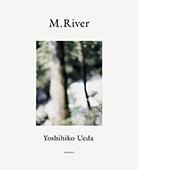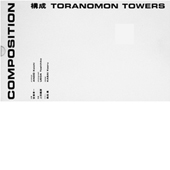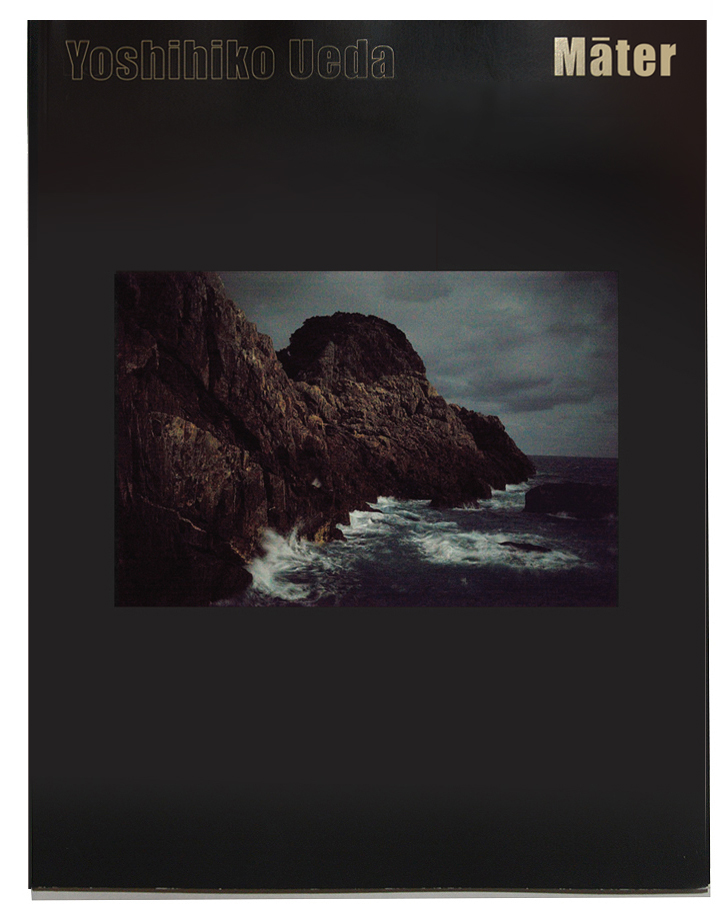
上田義彦『Māter』
発行:赤々舎 Size: H290mm × W227mm Page:64 pages Binding:Softcover Published in September 2022 ISBN:978-4-86541-150-8 |
¥ 4,000+tax
国内送料無料! お支払い方法は、銀行振込、郵便振替、 クレジットカード支払い、PayPal、PayPay よりお選び頂けます。 |
|---|
About Book
Māter 「母、源」─
自然、人、すべてを対等に捉え、根源的な生命としての存在を表す写真集。
Māter
Yoshihiko Ueda
"In Latin, mater means mother/source, Mäter derives from the Indo-European root word mehter (mother), and has the same etymology as the English word mother. The original meaning of the Latin word materia is "tree trunk." The trunk is thought to be the "womb" of life, and materia originates from the word mater."
Receiving high acclaim both within Japan and overseas, Yoshihiko Ueda has continued to present work on the frontline throughout his career of 40 years. His oeuvre profoundly reflects his consistent perspective, thoughts, and personality as a photographer.
Portraits, forests, family, rivers, buildings, human remains from the Jomon period, portraits of "paper," apple trees...
Expressing a desire to "discover how the world came to be" and to "affirm the transience that permeates the impermanence within which we live," Ueda's photographs are a manifestation of many years of meticulously developing his concepts and exploring various motifs.
The manner by which he transcends established notions and preconceptions to capture the intrinsic existence of "life," as well as the vivid presence of his subjects, and the overlapping layers of time, brings about an air of multifacetedness to his work in ways reminiscent of the matière of a painting.
Such expression is indeed made possible through Ueda's gentle, yet powerfully penetrating gaze that respects and appreciates "life."
In the works, a waterfall, valley, and a woman's body are photographed under the light of the moon at night, and presented in pairs.
Here, water, human body, mother, earth, moon, as forces that have continued to generate life since ancient times, reflect the fact that nature and the female body are equal and closely connected. The faint reflection of the water and the smoothness of the skin of the woman's body share a curious commonality that enables one to sense the luster, presence, and even the breath of nature.
Ueda's distinct and profound gaze that treats nature, people, and all things as equal, and expresses their fundamental life existence in his work, inform viewers of a certain truth. That is, while we generally understand "water," "waterfall" and "human body" symbolically as being different things, in fact they are all connected as life on earth, and are woven together like one large tapestry.
This work is an extension of his previous endeavors in exploring the origins of life that begins with "Quinault" -shot in the 1990s in a sacred Native American Indian forest, followed by his 2011 series "Materia" consisting of photographs of the native forests of Yakushima, and "Apple Tree" shot in 2017.
Ueda regards the earth, a planet that miraculously possesses the power to create life, as one large living organism, and thus perceives "water and rocks" to be fragments of it, as well as women who too have the ability to give birth to life. Photographing under the "moonlight" that illuminates only the writhing of life amidst the dark of the night while letting all else sink into the darkness, was in itself a journey of sorts to infer the origin of life that is shrouded in mystery.
(Quoted from the text for the exhibition "Māter" at TOMIO KOYAMA GALLERY ROPPONGI)
Related Exhibiton
上田義彦「Māter」 会期:2022年8月27日(土) 〜9月24日(土) 時間:11:00〜19:00 会場:小山登美夫ギャラリー六本木(東京都港区六本木6-5-24 complex665 2F)
日月祝休 |
Artist Information
上田義彦
1957年生まれ、兵庫県出身。写真家、多摩美術大学教授。福田匡伸・有田泰而に師事。1982年に写真家として独立。以来、透徹した自身の美学のもと、さまざまな被写体に向き合う。ポートレート、静物、風景、 建築、パフォーマンスなど、カテゴリーを超越した作品は国内外で高い評価を得る。またエディトリアル ワークをきっかけに、広告写真やコマーシャルフィルムなどを数多く手がけ、東京ADC 賞最高賞、ニューヨークADC賞、カンヌグラフィック銀賞はじめ、国内外の様々な賞を受賞。
2011年に自身のスペースGallery 916を主宰。2014年日本写真協会作家賞を受賞。また、初めて監督、脚本、撮影を務め2021年に公開された、映画『椿の庭』は大きな反響を呼び、映画監督としての仕事も注目されている。
作家活動は独立当初から継続し、2023年までに40冊の写真集を刊行。主な写真集に『QUINAULT』(青幻舎、1993年)、『AMAGATSU』(光琳社出版、1995年)、『at Home』(リトル・モア、2006年)、『Materia』(求龍堂、2012年)、『A Life with Camera』(羽鳥書店、2015年)、『FOREST 印象と記憶 1989-2017』(青幻舎、2018年)、『椿の庭』(赤々舎、2020年)、『Māter』(赤々舎、2022年)、『いつでも夢を』(赤々舎、2023年)などがある。
主な個展に「上田義彦『Photographs』」(東京都写真美術館、2003年)、「Chamber of Curiosities」(東京大学総合研究博物館、2006年/国立台湾芸術大学芸術博物館、台北、2011年/リヨン市ガダーニュ美術館、フランス、2011年)、「QUINAULT」(G/P Gallery、東京、2009年/Michael Hoppen Gallery、ロンドン、2010年/TAI modern、サンタフェ、2010年)、「風景の科学 −芸術と科学の融合−」( 国立科学博物館 、東京、2019年)など。
作品はエルメス・インターナショナル(フランス)、ケンパー現代美術館(アメリカ)、ニューメキシコ美術館(アメリカ)、フランス国立図書館(パリ)、Stichting Art & Theatre(オランダ)に所蔵されている。
Yoshihiko Ueda
Born in 1957 in Hyogo Prefecture, After assisting Masanobu Fukuda and Taiji Arita, he established himself as an independent photographer in 1982. Since then, he has pursued a distinct and unwavering visual aesthetic, engaging with a wide range of subjects across portraiture, still life, landscape, architecture, and performance. His work, which transcends traditional categories, has received critical acclaim both in Japan and internationally.
Ueda's editorial beginnings led to a prolific career in advertising and commercial film, earning him numerous accolades including the Tokyo Art Directors Club Grand Prize, a New York Art Directors Club Award, and a Silver Lion at the Cannes Lions International Festival of Creativity.
In 2011, he founded his own exhibition space, Gallery 916. In 2014, he received the Photographer Award from the Japan Photographic Society. His directorial debut The Garden of Camellias (2021), for which he also wrote the screenplay and handled cinematography, was met with great acclaim and marked a significant expansion of his creative work into cinema.
Ueda has continued his artistic practice without interruption since launching his independent career in the early 1980s. As of 2023, he has published a total of 40 photobooks, including Quinault (Kyoto Shoin International, 1993 / Seigensha, 2003), Amagatsu (Korinsha Press, 1995), at Home (Little More, 2006), Materia (Kyuryudo, 2012), A Life with Camera (Hatori Press, 2015), Forest: Impressions and Memories, 1989-2017 (Seigensha, 2018), A Garden of Camellias (AKAAKA, 2020), Māter (AKAAKA, 2022), and Dream Always (AKAAKA Art Publishing / Jiazazhi, 2023).
Major solo exhibitions include Yoshihiko Ueda: Photographs(Tokyo Photographic Art Museum, 2003); Chamber of Curiosities (University Museum of the University of Tokyo, Tokyo, 2006, the Kuandu Museum of Fine Arts, Taipei, 2011, Musées Gadagne, Lyon , 2011); Quinault (G/P Gallery, Tokyo , 2009, Michael Hoppen Gallery, London, 2010, TAI Modern, Santa Fe, 2010); The Science of Landscape: The Fusion of Art and Science(National Museum of Nature and Science, Tokyo, 2019); and Dream Always(Gallery on the Hill, Tomio Koyama Gallery, Tokyo 2023).
His works are held in the collections of Hermès International (France), the Kemper Museum of Contemporary Art (USA), the New Mexico Museum of Art (USA), the Bibliothèque nationale de France (Paris), and Stichting Art & Theatre (Netherlands).
Related Items
|
|
|
|
|---|
| |
|
|---|

